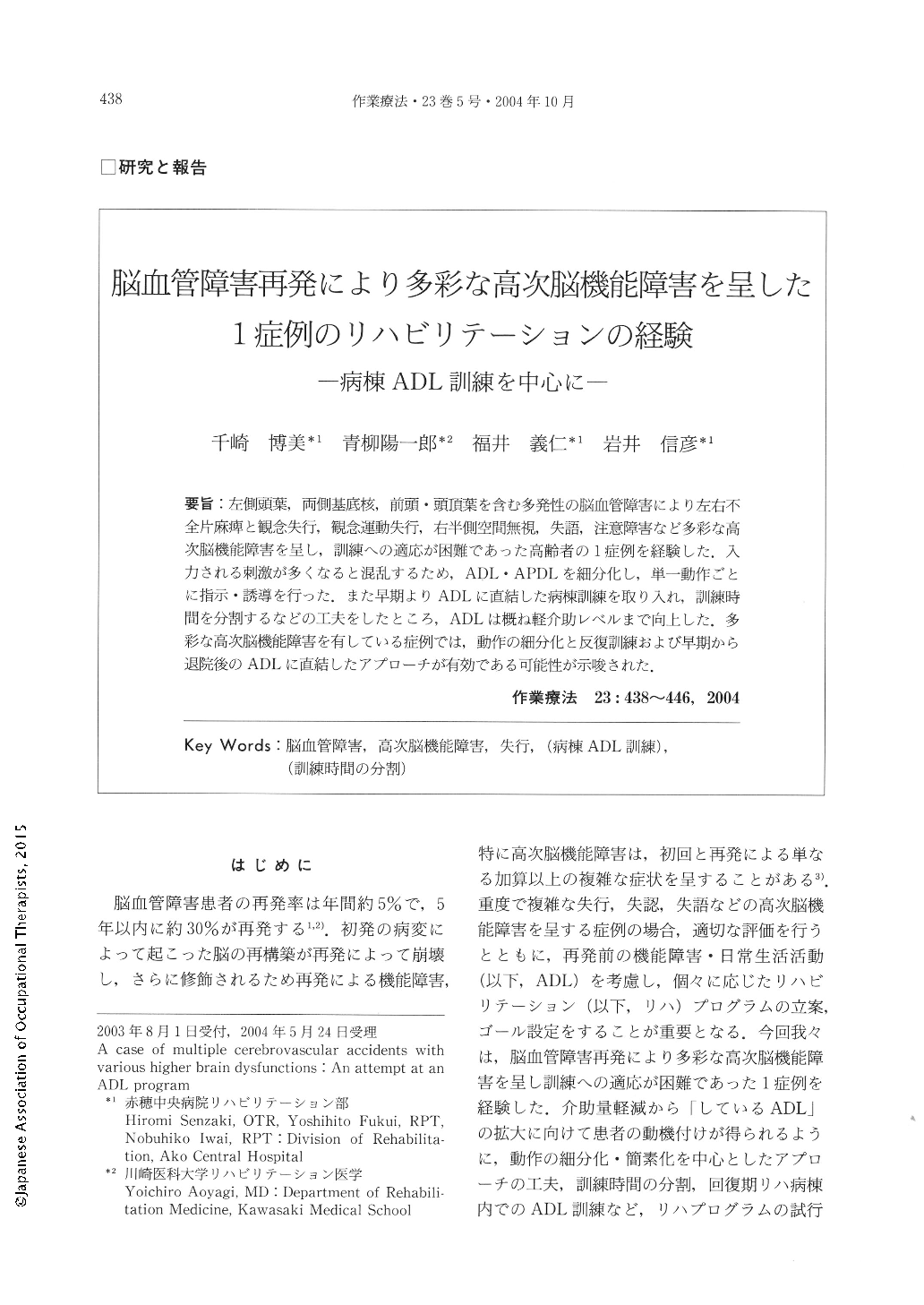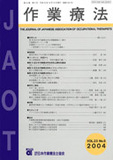Japanese
English
- 販売していません
- Abstract 文献概要
- 1ページ目 Look Inside
- 参考文献 Reference
- サイト内被引用 Cited by
要旨:左側頭葉,両側基底核,前頭・頭頂葉を含む多発性の脳血管障害により左右不全片麻痺と観念失行,観念運動失行,右半側空間無視,失語,注意障害など多彩な高次脳機能障害を呈し,訓練への適応が困難であった高齢者の1症例を経験した.入力される刺激が多くなると混乱するため,ADL・APDLを細分化し,単一動作ごとに指示・誘導を行った.また早期よりADLに直結した病棟訓練を取り入れ,訓練時間を分割するなどの工夫をしたところ,ADLは概ね軽介助レベルまで向上した.多彩な高次脳機能障害を有している症例では,動作の細分化と反復訓練および早期から退院後のADLに直結したアプローチが有効である可能性が示唆された.
We experienced the case of an older female of multiple stroke, who had bilateral hemiparesis and various higher brain dysfunctions including ideational apraxia, ideomotor apraxia, right unilateral spatial neglect, aphasia, and inattention. She adapted poorly to our rehabilitation program and often rejected therapy especially when she was given complicated and difficult tasks. We therefore subdivided the ADL and APDL into sub items and pointed out, repetitively, what she should do during her therapy activities. To encourage her to maintain rehabilitative-therapy motivation, we also performed ADL and APDL training (in the early stage) in the ward in cooperation with nurses and her family members. After a 3-month intensive rehabilitation program, the general ability of her ADL improved to the point where she needed only minimal assistance. Therefore, this therapy program has shown that subdivision and repetition in ADL training is crucial in older patients with various higher brain dysfunctions and a rehabilitative approach, even in early stages, directed to the real ADL may be more effective than functional tasks for higher brain function.

Copyright © 2004, Japanese Association of Occupational Therapists. All rights reserved.


